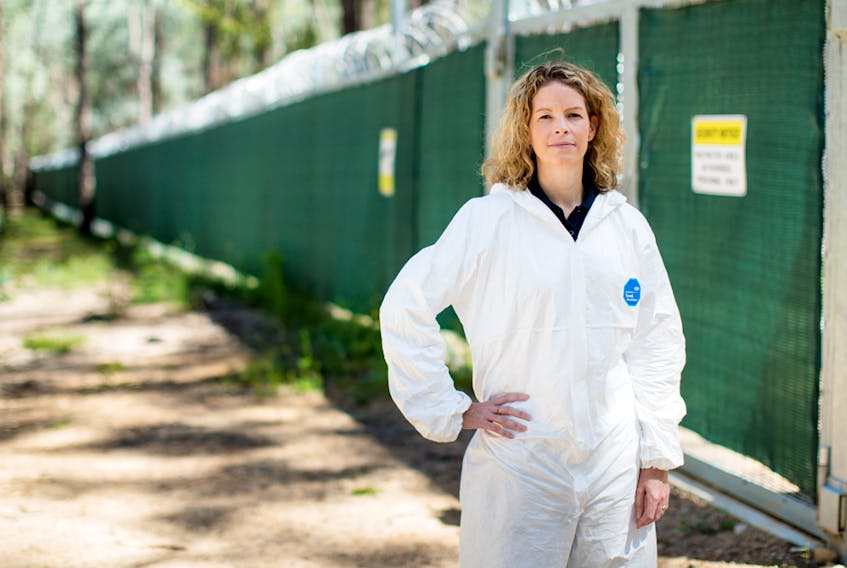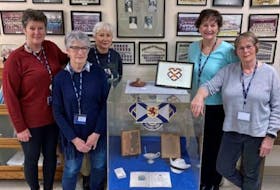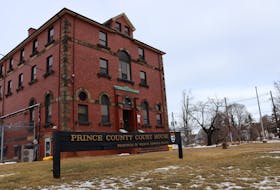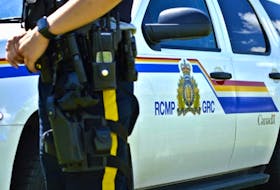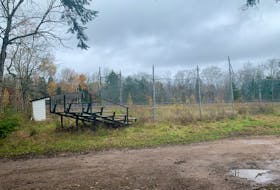When people ask what will happen to their corpses if they’re donated to a “body farm” for research, Dr. Shari Forbes provides them with as much, or as little detail, as they wish.
Certainly she tells them they would be in a natural environment, and left to decompose on the surface of the ground, in the open air, or perhaps in a shallow grave.
She might tell them that their bodies could be placed in the trunk of a car, or wrapped in bags, a duvet, a carpet — various forms of concealment to mimic real crime scenes. Their corpses would be left for many months, perhaps years, while scientists study how the local climate of Bécancour, Que., just across the river from Trois-Rivières, impacts the five different stages of human decomposition — fresh, bloat, active decay, advanced decay and skeletonization — or how quickly their soft tissue is lost to necrophagous insects like beetles and blow flies.
Remarkably, people are already signing on.
Sometime this summer, construction will begin on Canada’s first human taphonomy facility, more colloquially known, some say gruesomely, as a body farm.
Most forensic scientists dislike the term — inspired by American crime writer Patricia Cornwell’s 1994 book The Body Farm — arguing it trivializes and sensationalizes the research. Forbes, who grew up reading crime novels, understands why people are sensitive.
“It’s not at all useful in describing what we do — we don’t ‘farm’ bodies. We aren’t growing body parts,” she said. “But it’s because of Patricia Cornwell’s book (and crime shows like CSI) that people know about these facilities and, if that’s what they understand the facility is, I have no problem with that.”
Studying how we break down
The Secure Site for Research in Thanatology, one of only a handful in the world, will investigate how bodies decompose in the unique climate of a Canadian winter and summer, to more accurately help police estimate PMI, or post-mortem interval, the time that has elapsed since a human being has died, information crucial in death investigations.
For victims of homicide, “it’s about either confirming or denying an alibi, and trying to link an offender to that crime,” said Forbes, a forensics expert. The rate at which a human corpse decomposes changes according to the local environment and local conditions. Five days in Trois-Rivières would be very different from five days in Texas. “And obviously if we get (time of death) wrong it gives an offender a way of getting away with the crime,” Forbes said.
The information is also vital in the case of unidentified human remains. Narrow the time frame in which that nameless body may have died, and police can better match bodies to missing person cases.
The world’s first body farm opened in forested land in Knoxville, Tenn., in 1980. Today, there are eight in the U.S., and one each in Holland and Australia. The Canadian facility will be the furthest north of its kind.
“Our climate is very different, and we know that the environment has a huge impact on the rate and process of decomposition,” Forbes said.
The chosen site for the first Canadian facility is a patch of heavily forested woodland (again, the kind of place police might search for hidden remains) in a scientific industrial park in Bécancour, a city of 13,000 located on the south shore of the Saint Lawrence River.
A high-security fence topped with barbed or razor wire, as well as CCTV cameras, will surround the site, to make certain bodies are secure at all times, and that only those who need to be at the facility are inside it.
“Our main priority is the privacy and dignity of our donors,” Forbes said.
The nearest neighbour will be more than 1.5 kilometres away. At a community hall meeting in November, many of the questions were around odour: Will residents be able to smell the bodies?
Forbes has assured the mayor, council and residents of Bécancour that odours won’t travel more than 50 to 100 metres from the facility.
The first “donors” are expected to begin arriving in the fall.
Not for the queasy
A plot will be assigned to each corpse, and the plot labelled with the donor ID and date of placement. “That way we can ensure that we know exactly where each donor is located in the facility,” said Forbes, an Australian-born academic who holds a Canada 150 Research Chair in forensic thanatology at the Université du Québec à Trois-Rivières.
Forbes helped establish Australia’s body farm, which opened outside Sydney in 2016. She was recruited to Canada to lead and conduct research at the country’s first human taphonomy facility, which will also provide training to police, search and rescue teams, the military, and human rights groups.
As is the case in Australia, metal anti-scavenging cages will be placed over the human corpses in the Quebec farm. Pig carcasses will be used instead for scavenging studies (pigs are considered a good, albeit imperfect, proxy for humans, because their skin, like ours, has a fine layer of hair, and not fur, feather or scales.) Some decomposition research sites in the U.S. allow scavenging animals to feed on corpses.
Researchers will conduct different studies. Entomologists will collect insects, others will collect soil. They might explore how long a fingerprint can be recovered from a victim, or how long a DNA profile can be obtained from soft tissues.
Forbes works with cadaver dogs. Her speciality is collecting odours from decomposing bodies and trying to determine which of the 1,000 some compounds produced by a decaying body dogs use to locate human remains.
“We know it’s probably about a dozen,” Forbes said, whether the body is buried in soil, snow or water. Isolate those key compounds against the background odours “and we can improve their training, especially in challenging environments like mass disasters.”
Enzymes and bacteria are the two main biological drivers of decomposition. The enzymes initiate the bloat stage, Forbes said, while bacteria proliferate and take over the body. Volatile compounds produced by the chemical degradation of flesh and soft tissue attract “decomposition” flies, whose lifecycle entomologists can use to estimate a minimum time since death, depending on, for example, the size of the larvae, or maggots, found on the body.
The work isn’t for the queasy.
“Especially with odour, you have to have a strong stomach,” Forbes said. “We just see the science. We’re scientists and we recognize the value of our work, and so we just think about what we’re doing and who we’re helping — the police, and the victims and their families.”
Nature reports that the U.K. is set to open its first body farm on land owned by the British military. And while it may seem “repulsive” to some, the number of individuals donating their bodies to human decomposition farms is increasing, forensic anthropologist Daniel J. Wescott wrote in Forensic Sciences Research. The Forensic Anthropology Center in Tennessee has more than 4,000 preregistered donors, and “more bodies are now declined than accepted,” Westcott reported.
Forbes believes people are open to the idea, for two reasons: fewer traditions now around burial and a growing interest in “green burials” — the idea of being returned to the earth naturally.
Mayor Jean-Guy Dubois said residents see it as a chance to help science. People are already registering to be donors.
And while critics like Sue Black, author of All that Remains: A Renowned Forensic Scientist on Death, Mortality and Solving Crimes, see body farms as “both gruesome and grim,” and question whether human-based decomposition centres can really improve our ability to better predict time of death over rabbit or pig studies, Forbes “absolutely” sees benefit. The information she has provided police has surpassed anything she could give them using animal data, she said.
When she isn’t working, Forbes loves playing beach volleyball, reading crime novels and spending time with her English Springer Spaniel, a failed cadaver-detection dog named Izzy.
• Email: [email protected] | Twitter: sharon_kirkey
Copyright Postmedia Network Inc., 2019

